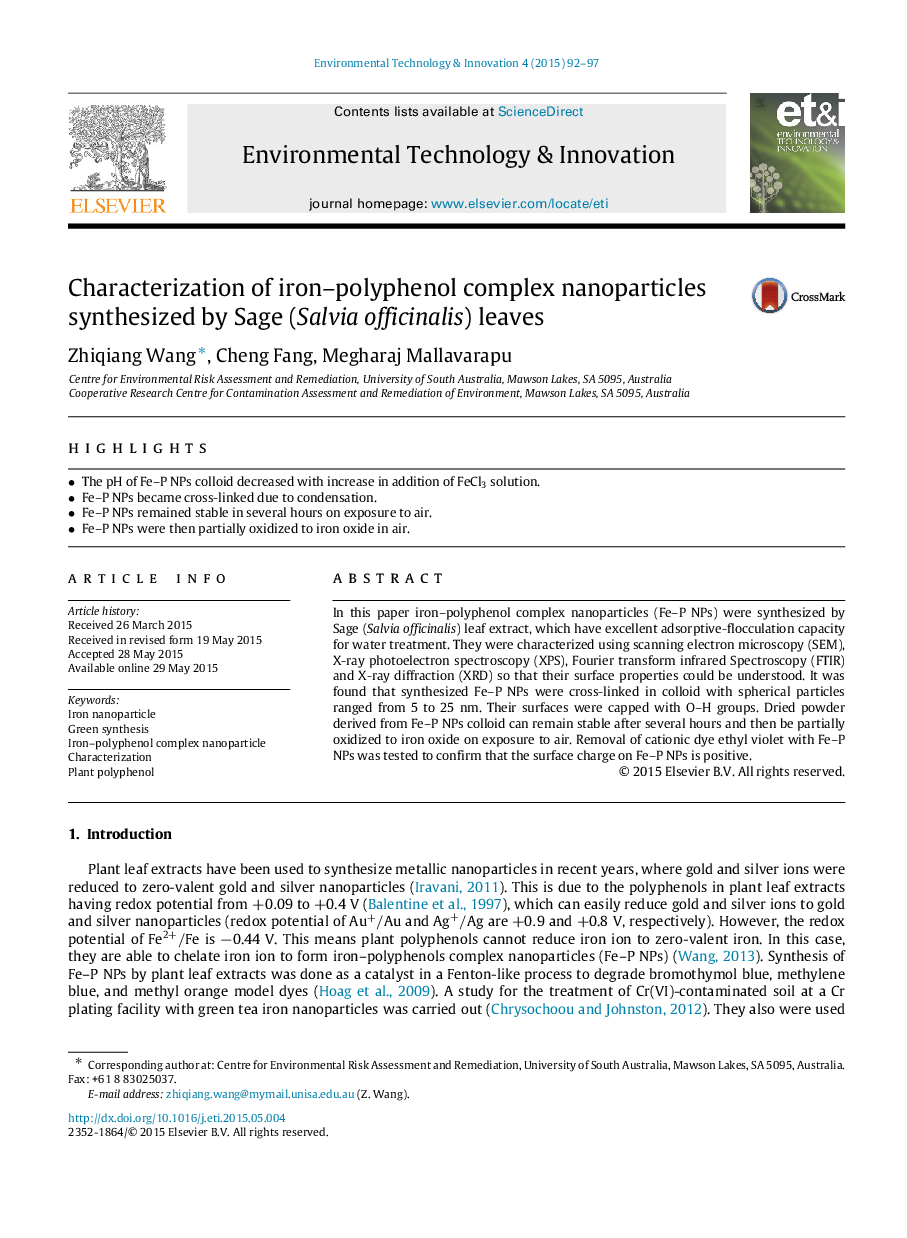| Article ID | Journal | Published Year | Pages | File Type |
|---|---|---|---|---|
| 4428225 | Environmental Technology & Innovation | 2015 | 6 Pages |
•The pH of Fe–P NPs colloid decreased with increase in addition of FeCl3 solution.•Fe–P NPs became cross-linked due to condensation.•Fe–P NPs remained stable in several hours on exposure to air.•Fe–P NPs were then partially oxidized to iron oxide in air.
In this paper iron–polyphenol complex nanoparticles (Fe–P NPs) were synthesized by Sage (Salvia officinalis) leaf extract, which have excellent adsorptive-flocculation capacity for water treatment. They were characterized using scanning electron microscopy (SEM), X-ray photoelectron spectroscopy (XPS), Fourier transform infrared Spectroscopy (FTIR) and X-ray diffraction (XRD) so that their surface properties could be understood. It was found that synthesized Fe–P NPs were cross-linked in colloid with spherical particles ranged from 5 to 25 nm. Their surfaces were capped with O–H groups. Dried powder derived from Fe–P NPs colloid can remain stable after several hours and then be partially oxidized to iron oxide on exposure to air. Removal of cationic dye ethyl violet with Fe–P NPs was tested to confirm that the surface charge on Fe–P NPs is positive.
